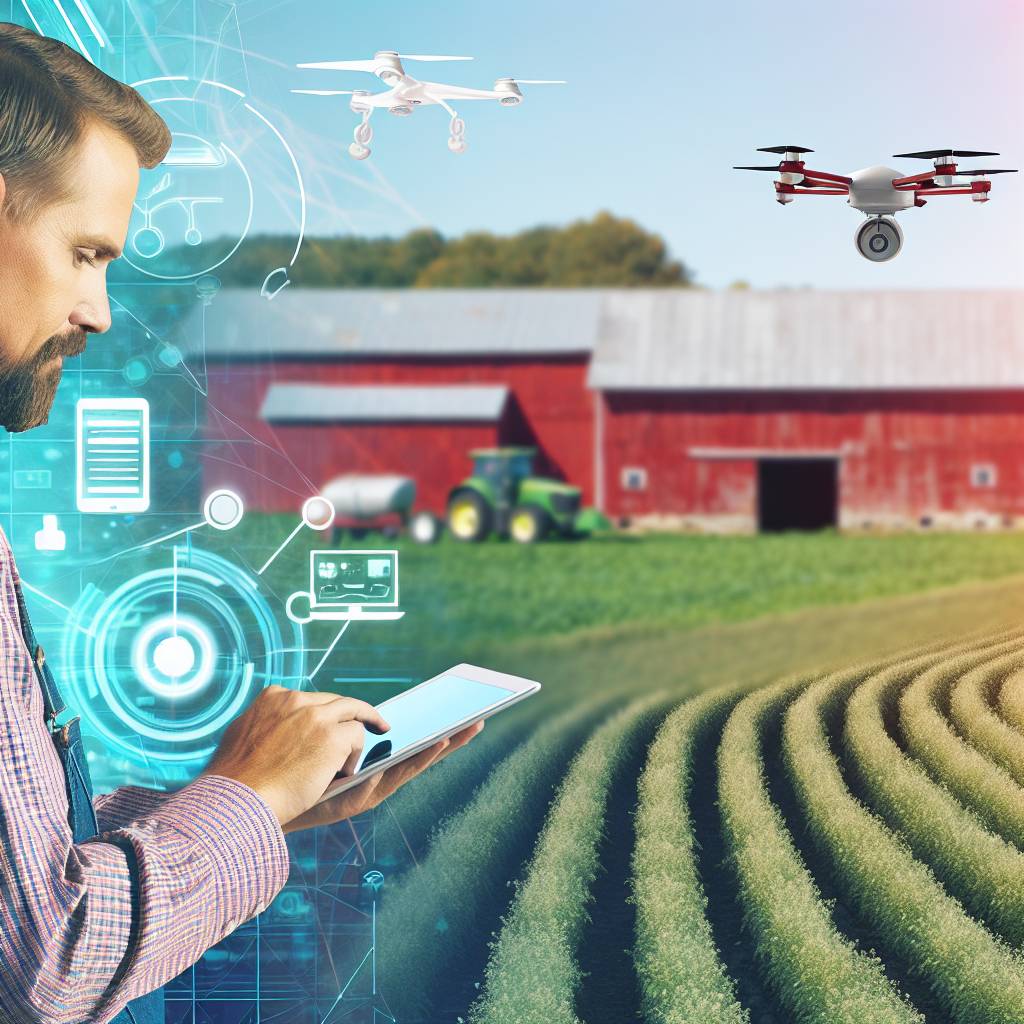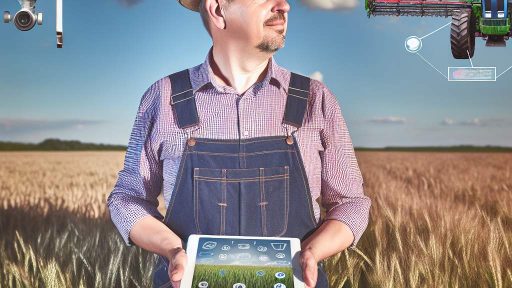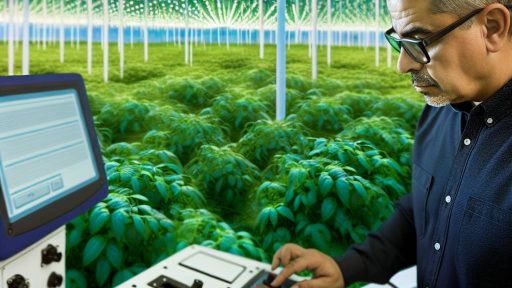Introduction to Agri-Fintech
Agri-fintech combines agriculture and financial technology.
This innovative sector aims to enhance farming operations.
It helps farmers access financial services more efficiently.
Additionally, it offers tools for better resource management.
Understanding agri-fintech is crucial for modern farmers.
It addresses various challenges within the agricultural sector.
Farmers can utilize data analytics for informed decision-making.
Moreover, it facilitates easier access to credit and investment.
Definition of Agri-Fintech
Agri-fintech refers to the integration of technology and finance in agriculture.
It encompasses various tools and platforms that support farmers.
This includes mobile apps for managing finances and crops.
Furthermore, blockchain technology enhances the transparency of transactions.
By leveraging these technologies, farmers can optimize their practices.
Importance of Agri-Fintech
Agri-fintech plays a vital role in increasing agricultural productivity.
It allows farmers to secure funding for essential resources.
Transform Your Agribusiness
Unlock your farm's potential with expert advice tailored to your needs. Get actionable steps that drive real results.
Get StartedAdditionally, it supports sustainable agricultural practices.
Access to real-time data drives better farming decisions.
Ultimately, agri-fintech contributes to food security and economic growth.
Key Agri-Fintech Trends Shaping the Future of Farming
Digital Payment Solutions
Digital payment solutions are revolutionizing farming transactions.
Farmers can now receive payments instantly, improving cash flow.
Moreover, these solutions reduce the need for physical cash handling.
Platforms like PayFarm and AgroPay offer user-friendly interfaces.
These tools enhance financial transparency and security.
Blockchain Technology
Blockchain technology is gaining traction in agri-fintech.
This method enhances traceability in the supply chain.
As a result, consumers gain confidence in food sources.
Additionally, it minimizes fraud in transactions and record-keeping.
Many startups are adopting blockchain for secure tracking systems.
Data-Driven Farming
Data-driven farming is transforming traditional agricultural practices.
Farmers can use analytics to optimize resources and yields.
Using IoT devices, they can monitor soil health in real-time.
Furthermore, data analytics improves decision-making processes.
Emerging companies are providing actionable insights for farmers.
Microfinancing Options
Microfinancing options are changing the funding landscape.
These options provide farmers with small loans for immediate needs.
Platforms like CropLoan and FarmFinance offer quick access.
This accessibility helps farmers invest in essential resources.
Consequently, they can enhance productivity and sustainability.
Financial Planning Tools
Financial planning tools are essential for modern farmers.
Showcase Your Farming Business
Publish your professional farming services profile on our blog for a one-time fee of $200 and reach a dedicated audience of farmers and agribusiness owners.
Publish Your ProfileThey help in budgeting and forecasting agricultural expenses.
These tools often feature intuitive dashboards for ease of use.
Farmers can track income, expenses, and profitability efficiently.
Advanced tools integrate data from various sources for analysis.
Insurance Innovations
Insurance innovations are crucial in managing farm risks.
New products like parametric insurance increase accessibility.
Farmers can protect themselves against weather-related damages.
Insurance providers now leverage technology for policy customization.
This flexibility allows farmers to choose what suits their needs.
The Role of Mobile Banking in Enhancing Farmer Accessibility
Introduction to Mobile Banking for Farmers
Mobile banking is revolutionizing how farmers manage their finances.
It offers an easier way to access banking services from remote locations.
This innovation fosters financial inclusion for underserved communities.
Benefits of Mobile Banking
Farmers experience a range of benefits from mobile banking.
First, they save time and effort on transactions.
Next, they gain immediate access to funds during crucial seasons.
Additionally, mobile banking reduces the need for physical bank visits.
Improving Financial Literacy
Mobile banking apps often include financial education resources.
Farmers can learn about budgeting, savings, and investment strategies.
Consequently, this increased knowledge enhances their financial decision-making.
Enhancing Crop Management
Farmers can use mobile banking for various agricultural needs.
For example, they can quickly buy seeds and fertilizers online.
Moreover, they can pay for services such as irrigation and pest control.
Access to Microloans
Mobile banking platforms often provide access to microloans.
These small loans help farmers invest in new equipment or technology.
As a result, they can improve productivity and profitability.
Case Studies: Successful Implementations
Several countries have seen successful mobile banking initiatives for farmers.
In Kenya, the M-Pesa program transformed agricultural finance.
This system enabled farmers to securely send and receive money instantly.
Challenges and Solutions
While mobile banking offers many advantages, challenges exist.
Connectivity issues can hinder access in rural areas.
Therefore, enhancing mobile network coverage becomes essential.
The Future of Mobile Banking in Agriculture
As technology progresses, mobile banking will continue to evolve.
New features will likely emerge to meet farmers’ diverse needs.
Ultimately, embracing mobile banking can profoundly impact agricultural success.
See Related Content: Wind Turbines Installation Best Practices for Farms
Crowdfunding Platforms: Revolutionizing Agricultural Investment
Introduction to Crowdfunding in Agriculture
Crowdfunding has transformed how farmers secure funding.
In recent years, it has gained popularity among agriculturalists.
This method allows farmers to connect with potential investors directly.
Moreover, it enables small-scale projects to flourish.
Types of Crowdfunding Models
There are several crowdfunding models that farmers can utilize.
Showcase Your Farming Business
Publish your professional farming services profile on our blog for a one-time fee of $200 and reach a dedicated audience of farmers and agribusiness owners.
Publish Your ProfileDonation-based crowdfunding is one of the most common types.
In this model, supporters contribute without expecting returns.
Equity crowdfunding allows investors to buy shares in farming projects.
This model provides farmers with significant capital upfront.
Benefits for Farmers
Crowdfunding offers numerous advantages for farmers seeking investment.
First, it democratizes access to funding opportunities.
Farmers no longer depend solely on traditional banks.
Second, crowdfunding can promote community engagement.
Supporters often become advocates for the funded projects.
How to Launch a Successful Campaign
Launching a successful crowdfunding campaign requires strategic planning.
First, farmers need a compelling project story.
A strong narrative can captivate potential investors’ interest.
Second, use social media to amplify the campaign’s reach.
Engagement through various platforms enhances visibility.
Challenges of Crowdfunding
Despite its advantages, crowdfunding is not without challenges.
Many farmers struggle with navigating the digital landscape.
Additionally, competition among projects can be fierce.
Using clear communication and transparency can help overcome these hurdles.
Future Outlook for Crowdfunding in Agriculture
The future of crowdfunding in agriculture looks promising.
As technology evolves, more farmers will adapt to this funding model.
Moreover, it may lead to innovative agricultural practices.
Embracing crowdfunding shapes a resilient agricultural economy.
Discover More: How Agri-Fintech Solutions Are Revolutionizing Modern Farming Practices
Data Analytics and Big Data: Empowering Farmers with Insights
Understanding Data Analytics
Data analytics transforms raw data into valuable insights for farmers.
This process involves collecting, processing, and analyzing agricultural data.
Farmers can use these insights to make informed decisions.
Additionally, data analytics helps in predicting market trends.
This predictive ability allows farmers to adjust their strategies accordingly.
Benefits of Big Data in Agriculture
Big data encompasses vast amounts of agricultural information.
Farmers can leverage big data to enhance crop yields.
Furthermore, it allows for improved resource management.
Farmers can optimize water usage and fertilizer application.
Consequently, they can maximize efficiency while minimizing waste.
Real-World Applications
Many farmers have already started implementing big data solutions.
For instance, precision agriculture utilizes GPS and remote sensing technologies.
This technology helps track soil health and moisture levels accurately.
Moreover, drones collect real-time data for more informed farming practices.
Challenges and Considerations
Despite its benefits, adopting data analytics can be challenging.
Farmers often face barriers like high initial costs and complexity.
Additionally, the need for training in data interpretation is crucial.
Showcase Your Farming Business
Publish your professional farming services profile on our blog for a one-time fee of $200 and reach a dedicated audience of farmers and agribusiness owners.
Publish Your ProfileUltimately, overcoming these challenges can lead to significant advantages.
Future Trends in Agri-Fintech
The integration of artificial intelligence in farming is on the rise.
AI can enhance data analytics by providing deeper insights.
Additionally, machine learning algorithms help in predictive farming.
Farmers can expect greater automation and improved decision-making tools.
This evolution will significantly shape the future of agriculture.
Delve into the Subject: How Biotechnology Is Transforming Modern Farming Practices

Blockchain Technology: Ensuring Transparency in Supply Chains
Introduction to Blockchain in Agriculture
Blockchain technology revolutionizes supply chain transparency in agriculture.
It creates a secure and verifiable record of transactions.
Farmers can trace the journey of their products from farm to table.
This accountability builds trust with consumers.
How Blockchain Enhances Transparency
Blockchain provides a tamper-proof digital ledger.
Each transaction is recorded in real time, ensuring accuracy.
Farmers can share vital information about their practices.
Consumers gain access to details about product origins.
This data empowers informed purchasing decisions.
Benefits of Blockchain for Farmers
Farmers enjoy increased market access through transparency.
They can differentiate their products in competitive markets.
Furthermore, transparency can lead to reduced fraud.
Farmers also benefit from higher prices for verified products.
Challenges and Considerations
Implementing blockchain involves initial costs and training.
Farmers may need assistance in adopting new technologies.
Moreover, not all consumers are aware of blockchain’s benefits.
Raising awareness is essential for widespread adoption.
Future Outlook of Blockchain in Agriculture
The potential for blockchain in agriculture continues to grow.
Innovations will likely simplify its integration into existing systems.
As more farmers embrace this technology, transparency will improve.
This shift can lead to a more sustainable agricultural sector.
Delve into the Subject: Solar Power Systems for Modern Agricultural Operations
Microfinance Solutions: Supporting Smallholder Farmers
Understanding Microfinance
Microfinance plays a crucial role in supporting smallholder farmers.
It provides access to financial services that were once unavailable to them.
This includes microloans, savings accounts, and insurance products.
Such services empower farmers to invest in their operations.
The Benefits of Microfinance for Farmers
Microfinance offers several advantages to smallholder farmers.
- Access to capital enables farmers to purchase seeds and equipment.
- It helps them manage risks associated with crop production.
- Farmers can improve their yields and overall productivity.
Additionally, microfinance fosters financial literacy among farmers.
This knowledge helps them make informed decisions about their finances.
How Microfinance Institutions Operate
Microfinance institutions (MFIs) specialize in serving low-income individuals.
They often emphasize relationship-based lending.
This approach builds trust between borrowers and lenders.
MFIs assess the repayment capacity of borrowers through local knowledge.
Showcase Your Farming Business
Publish your professional farming services profile on our blog for a one-time fee of $200 and reach a dedicated audience of farmers and agribusiness owners.
Publish Your ProfileCase Studies of Successful Microfinance Initiatives
Various MFIs have demonstrated success in empowering farmers.
One example is AgroFinance in Kenya.
They offer tailored loans to help farmers invest in modern farming techniques.
Another example is FarmServe in Uganda.
They focus on providing agricultural training alongside financial services.
These case studies highlight the positive impact of microfinance.
Challenges Faced by Microfinance Providers
Despite the benefits, microfinance institutions face challenges.
- High operational costs can limit their outreach.
- There are risks related to the borrowers’ ability to repay.
- Market saturation in some regions can diminish profitability.
It is essential for MFIs to adapt to changing conditions.
The Future of Microfinance in Agriculture
The future of microfinance in agriculture looks promising.
Innovative technology is enhancing service delivery.
Mobile banking solutions are expanding access for remote farmers.
Furthermore, partnerships with agricultural organizations are beneficial.
These collaborations increase the effectiveness of microfinance services.
The Rise of Precision Agriculture and its Financial Implications
Understanding Precision Agriculture
Precision agriculture uses advanced technology to enhance crop yields.
This approach focuses on specific plant needs within a field.
Farmers gather data from various sources to make informed decisions.
Technologies like GPS and IoT devices play a critical role.
These tools allow precise measurement and monitoring of conditions.
Financial Benefits of Precision Agriculture
Implementing precision agriculture can significantly reduce costs for farmers.
By precisely applying water and nutrients, farmers save resources.
This method also minimizes waste, leading to higher profitability.
Moreover, it increases yield per acre, enhancing revenue potential.
Investment in Technology
Investing in new technologies is essential for farmers adopting precision agriculture.
Smart sensors and drones can provide invaluable data insights.
Furthermore, investment in software helps in analyzing collected data.
These investments may seem high initially but yield long-term savings.
Challenges and Considerations
Despite the benefits, farmers face challenges with implementation.
Access to technology can be limited, especially in rural areas.
Additionally, there is a learning curve associated with new systems.
Farmers must ensure they are trained to utilize these technologies effectively.
Future Outlook
The future of precision agriculture looks promising for farmers.
Continuous advancements in technology will improve efficiencies.
Moreover, as data analytics evolves, farmers will have better insights.
Ultimately, embracing precision agriculture can secure a farmer’s financial future.
Additional Resources
U.S.-China Technological “Decoupling”: A Strategy and Policy …
Agtech: Breaking down the farmer adoption dilemma | McKinsey




